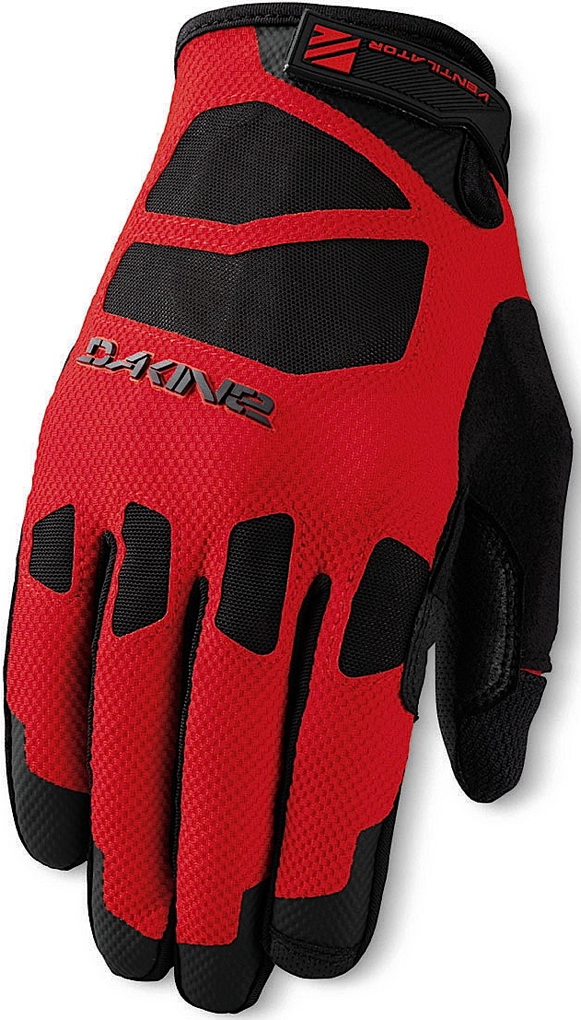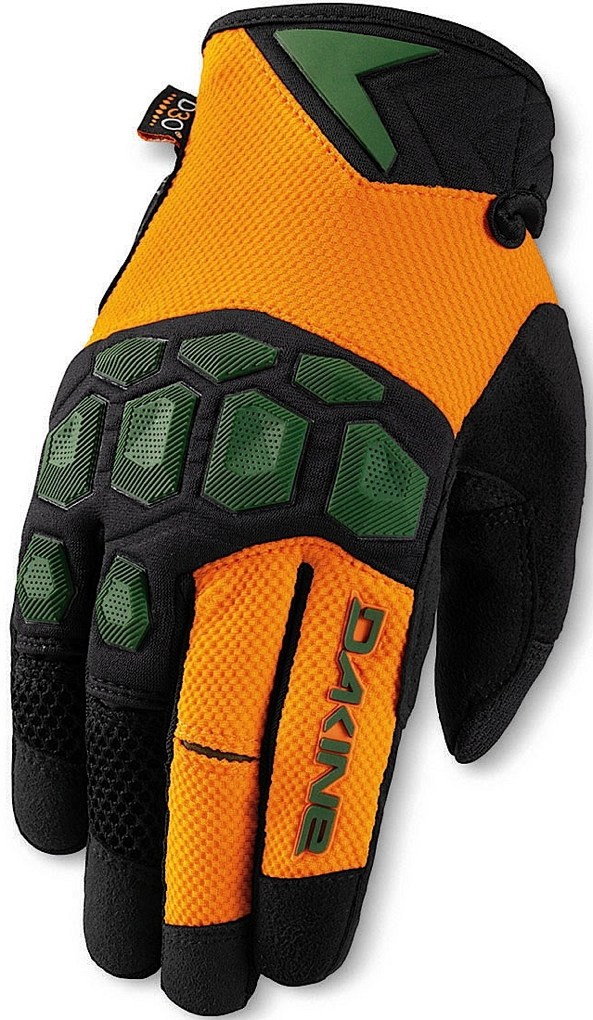
Men’s Caliber Jacket
Reviewer: Eric Melson
Size Tested: Medium
Color: Black
MSRP: $180
Features:
- Fully seam sealed
- YKK Waterproof Vislon zippers
- Invisible zippered media chest pocket
- Helmet compatible cinch hood
- Pit zips
- Extended back hem
- Articulated sleeves
- Adjustable cuffs
- Reflective logos
Shell Material: 100% Nylon 4-Way stretch 2.5 layer waterproof / breathable
Reviewer Info: 5’10’’, 165 lbs. Typically wear a size Medium.
Days Tested: 5
Location Tested: Whistler, BC
In the past, I’ve only worn traditional rain jackets while riding, and I’ve never been completely happy with their fit on the trail. The Dakine Caliber is a rain jacket with a bike-specific cut.
I almost always wear a size Medium, and I found the Medium Caliber to fit true to size. As for its cut, the jacket’s drop hem prevented it from riding up above my shorts, keeping the mud from hitting my lower back. The articulated sleeves are slightly longer, and I never noticed the jacket riding up above my wrists, which I’ve experienced with ordinary rain jackets.
The Caliber is made with a 2.5 layer waterproof / breathable shell material with a Nylon, DWR-treated face fabric. All the jacket’s seams are fully sealed, and all of its zippers are waterproof. The Caliber kept me dry riding lifts during steady drizzles, as I watched the water bead up on the fabric. On descents, even after splashing through deep mud puddles, I never experienced any water leaking through the Caliber.

I wasn’t as happy with the Caliber’s breathability, however. The outside of the shell fabric has a nice, fairly soft, stretchy feel, but the inside of the material feels rubbery (more like a basic rain coat such as the Marmot PreCip) and seemed to limit the jacket’s breathability. Whenever I started to work hard, a lot of condensation built up quickly in the jacket and I had to rely heavily on its the pit-zips for venting.
I’ve also worn the Outdoor Research Axiom jacket while riding, which is made with Gore-Tex Active. While also waterproof, the Axiom is far more breathable than the Caliber. However, the Axiom is almost $200 more than the Caliber. If your main concern is staying dry on the bike, the Caliber works really well. But, if both waterproofing and great breathability are what you’re looking for in a riding jacket, you may need to look at other, pricier options.
The Caliber has a minimal feature set that includes hand pockets, an internal breast pocket, and pit-zips that I found to be very useful.
My main gripe with the Caliber is its hood, which is not removable and can’t be stowed comfortably for descents (I tried to roll the hood up and stuff it inside the collar, but it kind of felt like a bothersome neck-brace). The hood is large enough to fit over a full-face helmet and its elastic drawcords help secure it, but it still occasionally came loose while riding, acting like parachute. While I believe rain jackets should have a hood, I would certainly prefer to have the option to stow it away when not in use.
Bottom Line
I can’t recommend the Caliber for its breathability, but it remains my go-to riding jacket. If you want a reasonably priced rain jacket with a biking-specific cut that is more comfortable to ride in that an ordinary rain jacket, the Caliber is a great option.

Ventilator Glove
Reviewer: Noah Bodman
Size Tested: Large
Color: Red
MSRP: $35
Features:
- Back of Hand: Lightweight, moisture wicking 4-way stretch nylon mesh
- Palm: Vented Silicone mesh
- Palm Padding: 3mm gel pads
- Closure: Velcro
- One piece seamless palm construction
- Microfleece thumb panels
- Touch screen compatible
Reviewer Info: 5’9”, 150 lbs, 32” waist. Typically wears a size Large
Days Tested: 15
Locations Tested: Whistler, BC; Whitefish, MT
The Dakine Ventilator is a simple, full-fingered glove that has an incredibly breathable construction.
The glove has large mesh panels on the top of the hand, the knuckles, and along the side of the fingers. These panels are essentially open, since the mesh is very thin.
The mesh panels significantly improve the Ventilator’s breathability; the gloves are much cooler than any other riding gloves I’ve worn. The Ventilator is quite a bit cooler than the Race Face Trigger glove, for example, which has a full mesh backing that’s a little thicker.
In the short time I’ve been riding in the Ventilator glove, however, the mesh is already showing signs of wear; it has torn out from the seams on one of the fingers.
In a size Large (which I normally wear), the Ventilator’s fit is snug, but it is stretchy enough that it is still perfectly comfortable.
The glove has a velcro closure tab on the top of the cuff, which I prefer over a bottom velcro strap found on some gloves. The palm of the glove has some fairly thin (3mm) gel padding in places that are more prone to abuse. The Ventilator’s palms have held up fine so far, even after taking one minor spill wearing the gloves.
The gloves’ fingers are touch screen compatible, and the snot wipe area of the thumb is made from a nice soft material.
Bottom Line
While it is not the most durable riding glove I’ve ever used, the Dakine Ventilator is very comfortable, and it is the most breathable full fingered glove I’ve ever worn.

Sentinel Glove
Reviewer: Eric Melson
Size Tested: Large
Reviewer Info: Typically wears a size Large
Color: Orange
MSRP: $45
Features:
- Velcro wrist closure
- Touch screen compatible
- One piece seamless palm construction
- Microfleece thumb panels
- Silicone gripper fingertips
Materials:
- Back of Hand: D3O rate-sensitive padding material; 4-way stretch mesh
- Palm: Clarino synthetic suede
- Palm Padding: D3O flexible palm shock absorption
Days Tested: 5
Location Tested: Whistler, BC
The Dakine Sentinel is designed to be a flexible yet durable glove, and is built with D3O foam on the knuckles and the palm.
The Sentinel has a fairly tight fit in a size Large. The gloves’ fingers are a little shorter than those on the Specialized Lodown glove, but the stretchy material around the knuckles can accommodate longer fingers just fine. The Sentinel has a velcro closure on the bottom of the cuff for a more secure fit.
The Sentinel is made with D3O ballistic-hardening armor, a moldable, malleable foam that becomes hard on impact. D3O is applied to the glove’s knuckles and palm, giving it a much bulkier feel than more minimalist gloves like the Ventilator (reviewed above).
The Sentinel also has a number of nice features that you might expect to find on a $45 glove: the fingertips are touch screen compatible, and the palm is made from synthetic suede.
I took a pretty good spill while wearing the Sentinel glove, and I was happy with how well the D3O protected my fingers. Their rigid construction and burly palm saved some skin on my fall, holding up better than a thinner glove would have, I’m sure.
Reviewer Tom Collier mentioned that the D3O in his pair of Sentinel gloves tends to harden in cool weather, which can make the glove a little stiff at the beginning of a ride. As such, I’m not entirely convinced gloves are the best application for the D3O material, since it adds a noticeable amount of bulk and stiffens up in cooler temperatures. Personally, I tend to prefer thinner riding gloves like the Troy Lee Designs XC, but if you don’t mind the bulkier gloves and often ride in warmer areas, the Sentinel would probably work well for you.
Bottom Line
While certainly not the lightest glove available, the Dakine Sentinel glove could still be a great choice if protection is your primary concern, especially for riding in warmer conditions.
